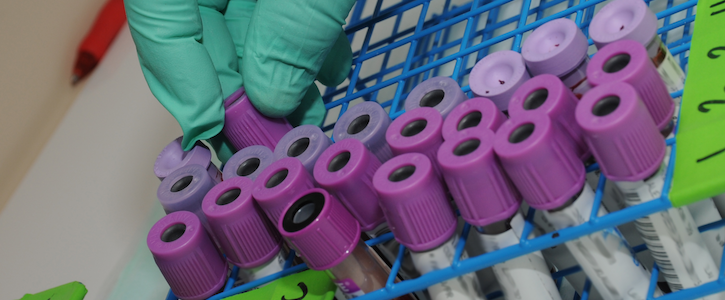The Cost of Knowing: How Genetic Tests Prevent and Produce Problems
Technology allows people to screen for hereditary cancers. But what happens afterward?

U.S. Air Force photo by Kemberly Groue. Image has been edited.
Imagine the wait. Your genes are undergoing next-generation sequencing, and you are about to learn whether you are susceptible to any number of hereditary cancers. Then the results come in: A germline mutation passed down from your parents places you at great risk for colorectal cancer. The chance that you will develop the disease by your 40th birthday is almost 100%.
Still, hope remains. In this high-tech age, science offers not only the tests to determine if you are in danger but also the surgeries to reduce that risk. You learn of 3 preventive procedures, which could cut your odds of getting colorectal cancer to as low as 4%. Imagine the relief.
But it is not that simple. Any of these surgeries could blowtorch your quality of life, forcing you to deal with lifelong body alterations or health problems. Cancer researchers in the University of Minnesota Medical School’s surgery department explored this very issue—and thus the general tension that blankets this modern decision-making process—in a new review published today in the British Journal of Surgery. Although risk-reducing surgeries (RRS) for some hereditary cancer syndromes boost life expectancy, curb anxiety, and are associated with better health-related quality-of-life measurements, the procedures cannot be undone and are linked to various complications, they wrote.
“With increasingly identifiable and testable mutations, RRS will likely become more widespread,” the authors, led by surgical oncologist Todd M. Tuttle, MD, wrote. “Patients considering RRS should be fully apprised of the short- and long-term ramifications of their decisions.”
One good thing, of course, is that genetic testing and RRS provide these at-risk patients with options, even as they face “multiple complex, life-altering decisions” related to the finding. Unlike people diagnosed with cancer, these individuals have the time to do something to prevent cancer, Tuttle and his colleagues wrote. They advocated for discussion and strategy-mapping with genetic counsellors, surgeons, primary care physicians, oncologists, and a host other healthcare professionals.
Another positive is that RRS quell the fears and anxiety felt by people at risk for cancer. As the authors noted, “genetic counselling and testing can adversely affect a patient or family’s emotional and mental well-being.” This can stem from facing cancer, if only in the distance, or even less obvious issues like guilt toward your kids and family conflicts. Physicians must be prepared for such a situation, Tuttle and his team said, but RRS can help those at risk.
In your case, RRS could have serious consequences. A total proctocolectomy, for example, carries a “high risk of early complications,” the writers noted. Another procedure brings few short-term problems but could cause long-term side effects, like glaucoma, macular degeneration, and cardiovascular disease, along with a low sex drive, poor sexual function, and hot flashes.
The same bargain exists for patients with other forms of hereditary cancer syndromes. Patients at risk of breast cancer who undergo a mastectomy, for example, could think less of their bodies, report less sexual sensation, or suffer breast pain, according to Tuttle and crew.
Still, for people at risk of developing the cancers examined in the review—breast, ovarian, and colorectal—RRS provides patients a path away from dire diseases, they wrote. Genetic testing enables patients to grasp the risk. RRS allow them to slash it. But only knowledge empowers them to make a choice of their own.
Read the study, “Quality-of-life implications of risk-reducing cancer surgery,” here.